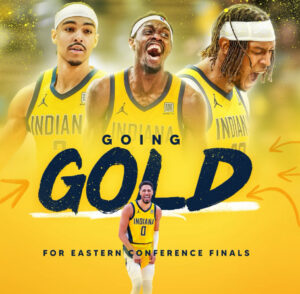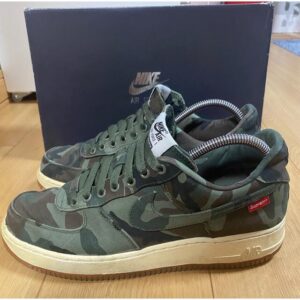For over a decade now, the NBA has evolved into one of the most brand-forward sports leagues in the world, where visual identity is no longer confined to a team’s logo or colors. It’s a league defined by culture, rhythm, and increasingly, fashion. One of the boldest examples of this has been the proliferation of City Edition uniforms — alternate jerseys that blend team history with local iconography and streetwear aesthetics. From Miami’s neon-drenched “Vice” kits to Golden State’s ode to Chinatown, City Edition jerseys have become seasonal events unto themselves, merging basketball with civic pride and graphic experimentation.
But as the 2025 NBA Playoffs entered their final stretch, fans noticed something different. The kaleidoscope of styles that defined regular-season broadcasts was missing. No more psychedelic swirls. No throwback fonts or obscure city slogans stitched into the lining. Instead, it was all clean, classic, and familiar. The Boston Celtics returned to their traditional green. The Lakers stuck with their regal purple and gold. The Oklahoma City Thunder, whose latest City uniform paid homage to Native American basket-weaving patterns, reverted to their standard navy. It wasn’t coincidence. It was directive.
According to multiple sources with knowledge of internal league operations, the NBA instructed playoff teams to cease wearing their City Edition uniforms after the second round. The reasoning? A strategic pivot back to tradition, clarity, and recognizability on the league’s biggest stage.
A League Built on Icons, Not Experiments
To understand why the league made this shift, one must look back to the original purpose of the City Edition series. First launched in the 2017–18 season, the City Edition program was Nike’s answer to two converging pressures: the league’s increasing ties to global streetwear culture and its desire to deepen fan engagement at a local level. These kits were billed not merely as alternates, but as visual storytelling vehicles — tools for cities and franchises to narrate their distinct histories, values, and geographies.
Initially, the results were electric. Miami’s “Vice” collection was so successful it became a cultural product in its own right, selling out in minutes and earning a permanent place in the NBA fashion pantheon. Denver’s rainbow skyline revival reminded fans of the Alex English era, while Memphis channeled the late, great Isaac Hayes. Even smaller-market teams like Utah and Portland found creative ways to celebrate their cultural foundations.
But as the seasons wore on, the novelty began to erode. With every team expected to unveil a new City Edition design each year, the creative well thinned. Many 2024–25 kits received tepid reactions, with fans and commentators alike criticizing their overuse of templates, corporate branding, or shallow thematic links. The City Edition jersey went from being a statement to being an obligation.
The NBA’s Playoff Theater: Legacy, Not Distraction
This uniform fatigue collided with the NBA’s broader media strategy during its highest-stakes games. Playoff basketball, particularly the Conference Finals and NBA Finals, is not just about who wins — it’s about constructing legacy. Every camera angle, every wardrobe choice, every aesthetic signal becomes a part of the visual archive that lives on in documentaries, highlight reels, and sneaker culture lore.
League insiders describe a growing concern that City Edition uniforms, while visually arresting, muddled that archival clarity. “If you watch Game 7 of the 1988 Finals, you know exactly who’s playing. You know the uniforms. You know the stakes,” said one branding executive familiar with the matter. “But when every year has four or five different looks, that identity becomes fractured.”
By standardizing the uniforms for the final two rounds — limiting teams to their core home and away kits — the NBA reasserts continuity. These games are intended to feel timeless, and the return to traditional uniforms is as much a curatorial decision as it is a branding one. The move mirrors what the NFL has done with its playoffs, where teams typically wear their primary uniforms, preserving clarity for both new and longtime viewers.
The Merchandising Math
Of course, any decision made at the upper levels of the NBA is rarely divorced from commerce. Jerseys, especially City Editions, are high-turnover merchandise. Their limited-edition nature creates artificial scarcity — a strategy that’s worked well for Nike and the league’s bottom line.
But the NBA’s merchandising strategy has matured. Recent years have seen a decline in City Edition sales volume, particularly in the second half of the season. “These kits are front-loaded,” says Amanda Chen, a sportswear marketing analyst. “Most fans who are going to buy a City Edition jersey do so in the first 90 days of its release.” By the time the playoffs arrive, consumer attention has already shifted — either to the next season’s rumors or to player-specific narratives like All-NBA selections and award races.
Returning to traditional jerseys during the most visible games doesn’t cannibalize sales — it re-centers the legacy jerseys as timeless, must-own pieces. In this view, the playoffs become not a retail endgame, but a mythmaking machine. The deeper a player goes, the more iconic his image becomes — and the more valuable his core jersey feels to collectors.
Players, Fans, and the Meaning of Uniforms
The sudden disappearance of City Edition jerseys from the playoffs hasn’t been universally praised. Some players reportedly enjoyed the freedom and flair that came with alternate kits. Shai Gilgeous-Alexander, known for his fashion-forward style, has spoken in past seasons about how certain jerseys reflect the swagger of a team. “You wear something different, it makes you feel different,” he once said. “It’s part of the energy we bring.”
Fans, too, have had mixed reactions. Social media lit up when the Milwaukee Bucks reverted to their green-and-cream core jerseys for the Eastern Conference Finals, ditching the electric blue and modernist lake patterns of their City set. Some lamented the lack of visual novelty, especially among younger viewers who’ve grown up expecting ever-changing styles from their favorite teams.
Still, others welcomed the shift. “It just looks right,” wrote one fan on Reddit. “When I see Jayson Tatum hit a dagger in the classic Celtics green, it feels like it’s part of history. Like it means more.”
This tension — between innovation and tradition, flair and clarity — isn’t unique to the NBA. But few sports leagues walk that line as visibly.
What This Means Moving Forward
Whether the City Edition freeze in the later playoff rounds becomes a permanent policy remains to be seen. As of now, league sources have framed the 2025 postseason as a “test case.” But should the visual cohesion and fan response remain positive, expect to see the rule codified or at least strongly encouraged moving forward.
The NBA, like any performance-based product, depends on narrative consistency. Its greatest players — from Jordan to Kobe to LeBron — are remembered not just for their stats or rings, but for the imagery attached to them. Jordan in his red No. 23, pumping his fist. Kobe, stoic in gold. Steph Curry shimmying in white and royal blue. Uniforms are part of the mythology, not just fabric. And that mythology needs consistency to thrive.
Beyond the Court: Aesthetic Cycles and Cultural Reset
The City Edition program isn’t going anywhere. In fact, rumors point to an even more ambitious rollout for the 2025–26 season, with more localized artist collaborations and AI-assisted design tools coming into play. But the visual overload of recent seasons has opened the door for a recalibration.
In many ways, the playoff uniform restriction reflects a broader aesthetic fatigue in culture at large. The maximalist era — marked by constant reinvention, remixing, and surprise drops — may be waning. In its place is a renewed appreciation for clarity, depth, and substance. Whether in fashion, graphic design, or sports apparel, the pendulum is swinging back toward core values. Literally and metaphorically.
For the NBA, that means anchoring its most important moments in recognizable tradition. That means letting the games — not the graphics — speak loudest.
The Power of Less
Stripped of their flashiest jerseys, NBA teams in the Conference Finals and Finals don’t look boring — they look focused. These games aren’t about fashion, slogans, or even civic representation. They’re about legacy. And sometimes, to see clearly, you need to clear the stage of distractions.
There will always be room for City Editions in the regular season, where experimentation thrives and stories can be told in a broader arc. But in the crucible of the playoffs — where every possession matters and history is written live — the clean lines of a team’s core identity take precedence.
The NBA’s decision to bench City Edition uniforms isn’t just a sartorial footnote. It’s a reminder that while style might sell tickets, substance wins rings — and endures in memory.
No comments yet.








